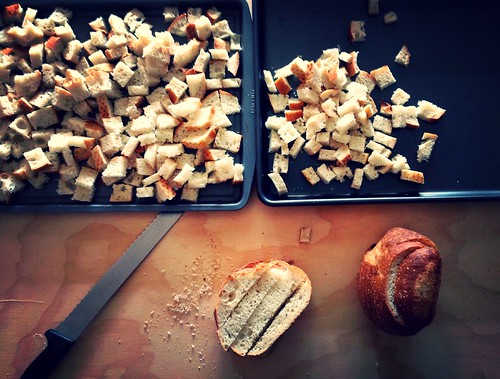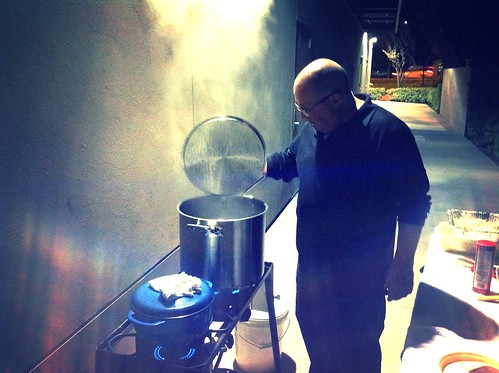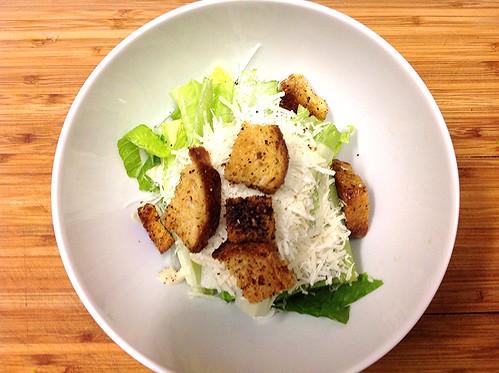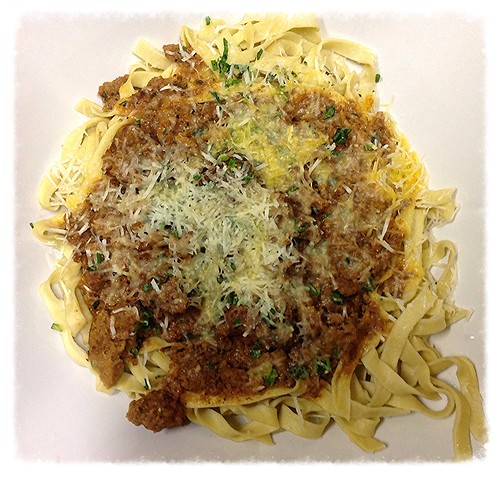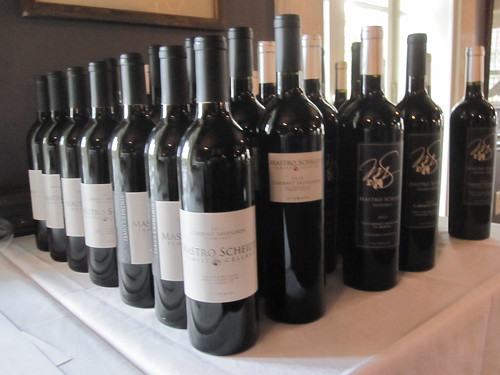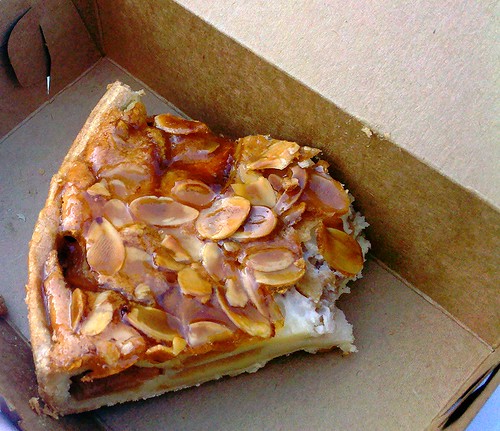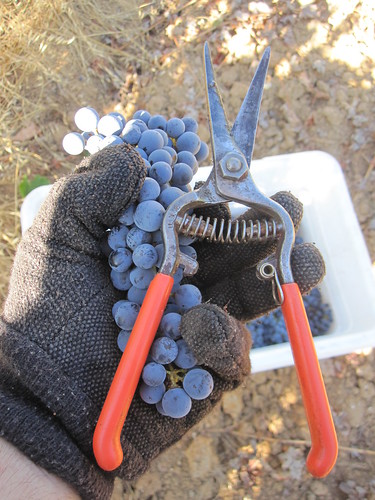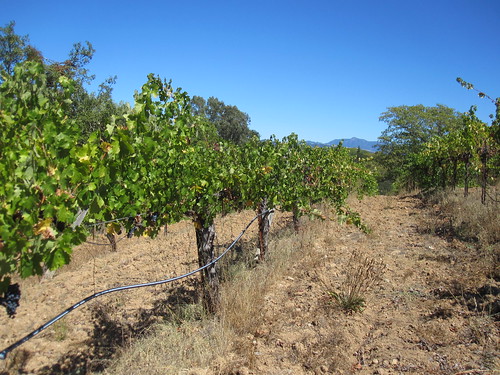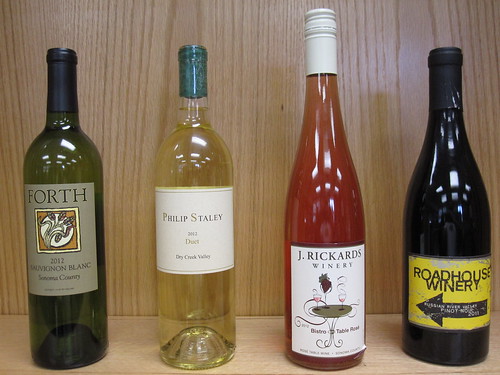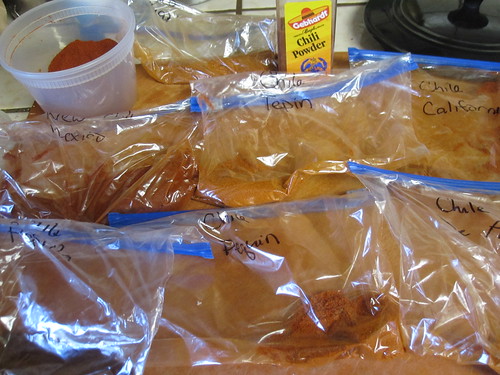In most cases, with each taste, great wines reveal something, something more. Sure, I can figure out the sensory stuff with the best in the room. But that sensory evaluation is fleeting, it’s momentary, as the wine expands in the glass. The evaluation is also particular to the moment, as wine is constantly changing in the bottle. Taste the same wine a month later and the conditions change. Great wines are pervasive, they make an immediate sensory impact and a long-term personal impact; compelling the taster to seek out the wine again and again.
My first smells and tastes were probably a holdover from the truffle cheese and prosciutto de Parma I’d eaten moments earlier. So the first tastes were a throwaway, to refresh the palate.
Even though I discounted my first taste, one of the wines was certainly rich.
The second taste began to reveal what I was experiencing in that moment. Bold fruit; no-holds-barred fruit; with a monster of a back palate. This wine was not for the faint or those looking for softness. In all honesty, the second taste actually put me off a bit, it was too much, too bold. This certainly wasn’t a Pinot or Burgundy blind tasting. It had to be Bordeaux. But was this a blend or a single varietal? I know from past tastings, the likelihood of me figuring out if this wine was pure Cabernet or something else, was not likely. I’m much better at figuring out Old World versus American versus New World wines. This certainly tasted American to me, but knowing Lanette, I put the odds of this wine being American at 50/50.
Tasting again and again I began to shift my focus from sensory evaluation to personality and situational characteristics. When would I drink a wine like this and with whom? Who would appreciate this? What’s the setting? What food would pair with this wine? This is a showcase wine, not a warm-up. Any lesser wines, I don’t contemplate this much; I simply drink and move on. This had to be an epic wine.
But what was it? Who made it? Where was it from?
I get the fact that this is well crafted wine. This wine is not being tasted on its own, but side-by-side with another wine. And while I didn’t know it at the time, we were about to taste 8 other wines of high quality, side-by-side for the next couple hours.
For some reason, the crowd was very excited about this second wine. Is it rare? Is it expensive? Probably yes to both. Was I the only guy who wasn’t in on this? Then Lanette says, “this is the Latour of Italy…the Lafite of Italy.” So it was Bordeaux.
Take another sip…
Again from Lanette, “if I told you this was 100% Merlot, would that change anyone’s opinion?”
Take another sip…
I think to myself, “This wine is outstanding…this is merlot? No way…merlot doesn’t taste like this. The Lafite of Italy…What the hell have I been missing?! An Italian merlot maker? That narrows the list considerably.”
The suspense was building and Lanette was doing a wonderful job of building it.
I’m now captive, hostage to this wine. I know it’s of very high quality, from Italy, and 100% Merlot.
Do I have any sips left?
The brown bags are are torn apart to reveal…Masseto; 100% merlot from Italy and coming in at 15% alcohol.
I’ve only read about this wine; the book, a gift from my Mother about the best wines of Italy written by Bastianich. I’ve tended to favor the wines from La Spinetta, Gaja, and Pio Cesare over the years as benchmarks for the finest red wines in Italy. I would have never have guessed merlot could taste this good; this great. Nebbiolo, yes. Merlot, no.
Once the Masseto was revealed, it was quickly snatched up, but it was only the beginning of the evening. I wish I could have squirreled away another glass for later comparison. This is one of those rare opportunities where opinions are changed in an instant. Forget the preconceptions, your bias and learn something new. Merlot can be extraordinary.
At the end of the night, I had a glass of 2007 Ridge Monte Bello in my glass, a wine that made me change my perceptions regarding American oak and Cabernet Sauvignon outside of Napa Valley. The Monte Bello was a fitting end to a provocative and enjoyable evening dedicated to changing my opinion about merlot. Italians can make a fantastic merlot; we Americans should try harder at making one too.
Thanks Lanette.
Masseto 2009
Ridge Monte Bello 2007
Hundred Acre 2009
Guado al Tasso 2009
Ramey Pedregal 2008
Opus One 2007 (twice)
Bryant Family Bettina 2009
